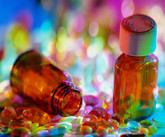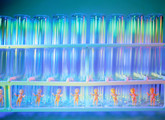Biosimilars/Research
What clinical trials will be required for biosimilar mAbs?
The relevant European guideline states that if the reference medicinal product has more than one indication, the efficacy and safety of a biosimilar has to be justified, if necessary by demonstrating it separately for each indication claimed. The guideline brings up the possibility of ‘extrapolating’ efficacy (granting several clinical indications that are licensed for the reference product, although only one of the indications has been studied in the clinical development programme of the biosimilar). This would not be done without serious consideration. The mechanism of action of monoclonal antibodies (mAbs) is usually complex and in many cases only partially understood.
Technical challenges in defining mAbs
Monoclonal antibodies (mAbs) are highly complex molecules with secondary and tertiary structures. The drug substance (the molecule itself) and drug product (the pharmaceutically formulated final product) are heterogeneous, i.e. a mixture of several slightly different structures. Although the molecular characterisation of a mAb molecule itself might have reached a high level of precision, reliability, quality and reproducibility, various possibilities for mAb heterogeneity exist. Variations to the mAb protein include alternative disulfide pairings/disulfide shuffling, deamidation, (methionine) oxidation, cyclisation of N-terminal glutamine residues and partial enzymatic cleavage during manufacturing. Variations of post-translational modifications such as glycosylation patterns include differential addition of sugars, alternative branching of sugar chains and others. Physicochemical characterisation of these characteristics currently remains cumbersome.
How far does similarity go?
How much similarity does a biosimilar monoclonal antibody (mAb) have to show to its reference mAb? The European overarching biosimilar guideline states that a biosimilar needs to be ‘similar, in molecular and biological terms, to the active substance of the reference medicinal product.’ The guideline gives an example to highlight this, stating that an interferon alfa-2b would not be acceptable as a reference product to a biosimilar interferon alfa-2a1. Because interferon alfa-2a and alfa-2b differ in only one amino acid, the guideline thus indicates that the entire amino acid sequence of the two molecules should be identical.
The biosimilars challenge
What are the challenges facing biosimilars? This was the question broached in a paper by Professor Håkan Mellstedt of the Department of Oncology, at the Karolinska University Hospital Solna, Stockholm, Sweden.
Development of biosimilars mAbs
Is the development of biosimilar monoclonal antibodies (mAbs) possible in Europe? This was the question broached in a paper by Dr Christian Schneider – Chairman of both the Committee for Advanced Therapies and Biosimilar Medicinal Products Working Party and Co-opted member of the Committee for Medicinal Products for Human Use.
Challenges in the development of biosimilars mAbs
What are the challenges facing development of biosimilar monoclonal antibodies (mAbs) in Europe? This was the question broached in a paper by Dr Christian Schneider – Chairman of both the Committee for Advanced Therapies and Biosimilar Medicinal Products Working Party and Co-opted member of the Committee for Medicinal Products for Human Use.
Phase III study of a new biosimilar filgrastim product (Zarzio) published
A biosimilar recombinant human granulocyte colony-stimulating factor (filgrastim) (rhG-CSF), Zarzio (Sandoz GmbH), was evaluated in healthy volunteers in four phase I studies and in neutropenic patients in a phase III study.
Phase I studies of a new biosimilar filgrastim product (Zarzio) published
Zarzio (Sandoz GmbH), a biosimilar recombinant human granulocyte colony-stimulating factor (filgrastim), was evaluated in healthy volunteers in four phase I studies and in neutropenic patients in a phase III study.
Include health economics in development of biosimilars
The early inclusion of health economics in the process of developing biopharmaceuticals and biosimilars is imperative with a view to demonstrating their relative (cost) effectiveness and informing registration, pricing and reimbursement decisions, writes Professor Steven Simoens of the Katholieke Universiteit Leuven, Belgium, in the Journal of Medical Economics in 2009.
In the article he discusses health economic challenges of research and development, registration, pricing and reimbursement of biopharmaceuticals and biosimilars. Professor Simoens identified relevant studies by searching PubMed, Centre for Reviews and Dissemination databases (Database of Abstracts of Reviews of Effects, National Health Service Economic Evaluation Database, and Health Technology Assessments Database), Cochrane Database of Systematic Reviews and EconLit up to March 2009. Additionally, the bibliography of included studies was checked for other relevant studies.
For complex biosimilars in EU: drop clinical comparability
Clinical trials required by European regulators to compare biosimilar products with corresponding biologic brands are surplus to requirements and may even be a barrier for the development of biosimilars of more complicated biologics, state Professor Huub Schellekens and Dr Ellen Moors of Utrecht University, The Netherlands, in a Nature Biotechnology Commentary of January 2010. “If you look in detail at the accepted and rejected biosimilars and the differences, then you might conclude that proof of clinical equivalence is actually overdue,” comments Professor Arnold Vulto of the Erasmus MC, Rotterdam.












